RTX 4070 SUPER is the first SUPER graphics card launched by Nvidia in the GeForce RTX 40 series. The SUPER cards from Nvidia add a performance boost to the original models and that too without increasing the price. RTX 4070 SUPER makes its place above the RTX 4070 and sits below the RTX 4070 Ti in the RTX 40 series lineup. RTX 4070 SUPER is around 12% faster than the original RTX 4070 which is quite a decent gain in performance because both cards have the same price tag. The main competitors of the RTX 4070 SUPER are the Radeon RX 7800 XT from AMD and the GeForce RTX 4070 Ti from Nvidia itself.
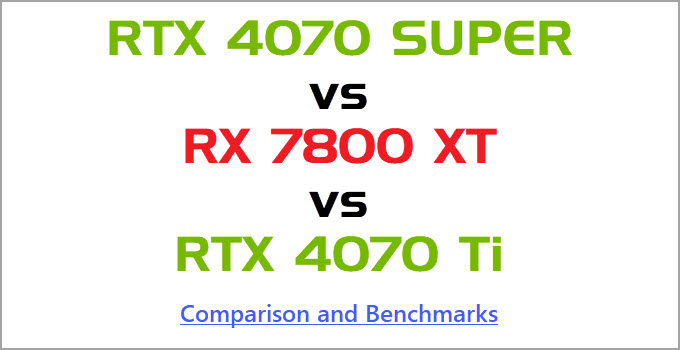
RTX 4070 SUPER vs RX 7800 XT vs RTX 4070 Ti Comparison
Below is a comparison between RTX 4070 SUPER, RX 7800 XT, and RTX 4070 Ti graphics cards based on their specifications, gaming performance, pricing, power consumption, and features.
GPU Architecture
RTX 4070 SUPER and RTX 4070 Ti are built on the latest Ada Lovelace architecture on a smaller 5nm fabrication process. Both these cards use AD104 GPU chip but in different configurations. The RTX 4070 Ti uses a fully unlocked AD104 chip but the RTX 4070 SUPER uses a slight cut-down version of the AD104 chip and has slightly lesser cores. RTX 4070 SUPER comes with 7168 CUDA Cores, 56 RT Cores (3rd Generation), and 224 Tensor Cores (4th Generation). On the other hand, RTX 4070 Ti comes with 7680 CUDA Cores, 60 RT Cores (3rd Generation), and 240 Tensor Cores (4th Generation).
Radeon RX 7800 XT is built on the RDNA 3 GPU architecture with Navi 32 XT GPU Chip. The GPU has a Chiplet design consisting of a Graphics Compute Die (GCD) and Memory Cache Die (MCD). Here the GCD uses a 5nm fabrication process whereas MCD is built on a 6nm manufacturing process. The card uses a Navi 32 XT GPU chip and comes with 3840 Stream Processors, 60 Ray Accelerators, and 120 AI Accelerators.
Must Read: Difference between CUDA Cores and Stream Processors
| RTX 4070 SUPER | RX 7800 XT | RTX 4070 Ti | |
| GPU Chip | AD104 | Navi 32 XT | AD104 |
| GPU Architecture | Ada Lovelace | RDNA 3.0 | Ada Lovelace |
| Fabrication Process | 5nm | 5nm GPU (MCD 6nm) | 5nm |
| CUDA Cores/Stream Processors | 7168 CUDA Cores | 3840 Stream Processors | 7680 CUDA Cores |
| RT Cores | 56 (3rd Gen.) | 60 | 60 (3rd Gen.) |
| Tensor Cores / | 224 (4th Gen.) | 120 | 240 (4th Gen.) |
Video RAM [VRAM]
The memory configuration for RTX 4070 SUPER and RTX 4070 Ti is the same. Both of them come with 12GB GDDR6X memory having a 192-bit interface. The memory runs at a speed of 21 Gbps and delivers a bandwidth of 504 GB/s. On the other hand, RX 7800 XT comes with 16 GB GDDR6 memory with a wider 256-bit interface. Its memory runs at 19.5 Gbps speed and generates a significantly higher bandwidth of 624 GB/s.
| RTX 4070 SUPER | RX 7800 XT | RTX 4070 Ti | |
| Memory Size | 12 GB GDDR6X | 16 GB GDDR6 | 12 GB GDDR6X |
| Memory Interface | 192-bit | 256-bit | 192-bit |
| Memory Speed | 21 Gbps | 19.5 Gbps | 21 Gbps |
| Memory Bandwidth | 504 GB/s | 624 GB/s | 504 GB/s |
| Infinity Cache | NA | 64MB | NA |
Features
All three graphics cards support Directx 12, OpenGL 4.6, Vulkan 1.2, HDMI 2.1, AV1, Real-Time Ray Tracing, variable refresh rate technologies G-Sync/FreeSync, and PCIe Express 4.0 x16. When it comes to image upscaling technologies to gain more performance or FPS in games, RTX 4070 SUPER and RTX 4070 Ti support Deep Learning Super Sampling (DLSS) while RX 7800 XT support FidelityFX Super Resolution (FSR). Here, RX 7800 XT is the only card that supports DisplayPort 2.1 for 8K Display Resolution at 165Hz.
| RTX 4070 SUPER | RX 7800 XT | RTX 4070 Ti | |
| Bus Interface | PCI Express 4.0 | PCI Express 4.0 | PCI Express 4.0 |
| DirectX | 12 Ultimate | 12 Ultimate | 12 Ultimate |
| OpenGL | 4.6 | 4.6 | 4.6 |
| Vulkan | 1.2 | 1.2 | 1.2 |
| SLI / CrossFire | NA | NA | NA |
| VR Ready | Yes | Yes | Yes |
| G-Sync/FreeSync | Yes | Yes | Yes |
| HDMI 2.1 | Yes | Yes | Yes |
| DisplayPort 2.1 | No | Yes | No |
| AV1 Support (Encode/Decode) | Yes | Yes | Yes |
| Real-Time Ray Tracing | Yes | Yes | Yes |
| Deep Learning Super Sampling (DLSS) | Yes | NA | Yes |
| FidelityFX Super Resolution (FSR) | NA | FSR 2 | NA |
Gaming Performance
Here are the gaming benchmarks of these cards at 1440p and 4K resolution in the latest AAA games.
1440p Gaming Benchmarks
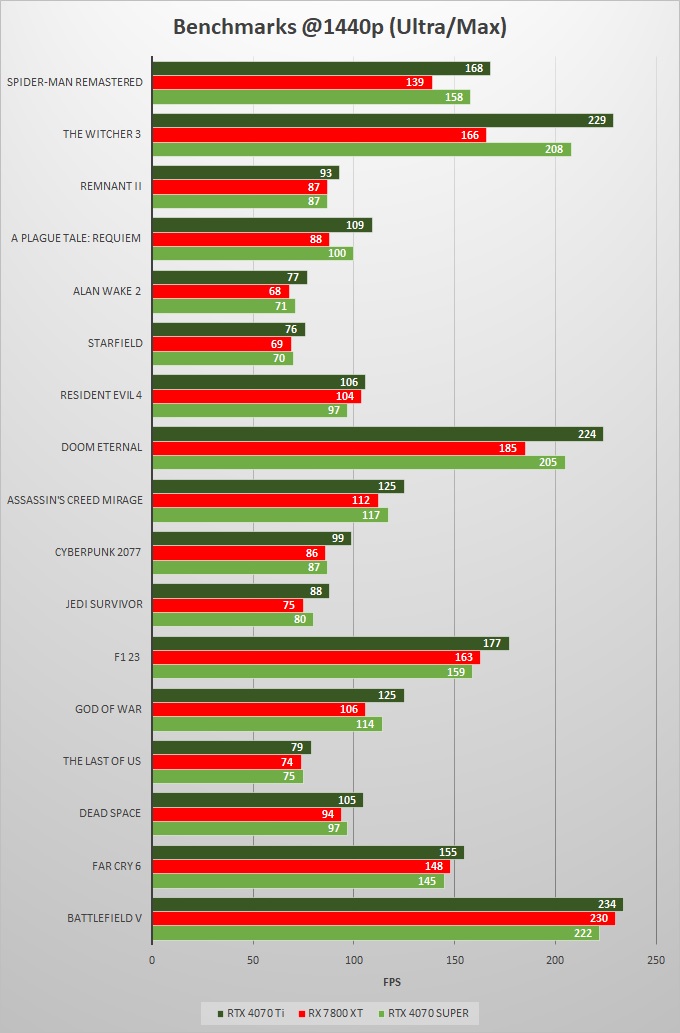
4K Gaming Benchmarks
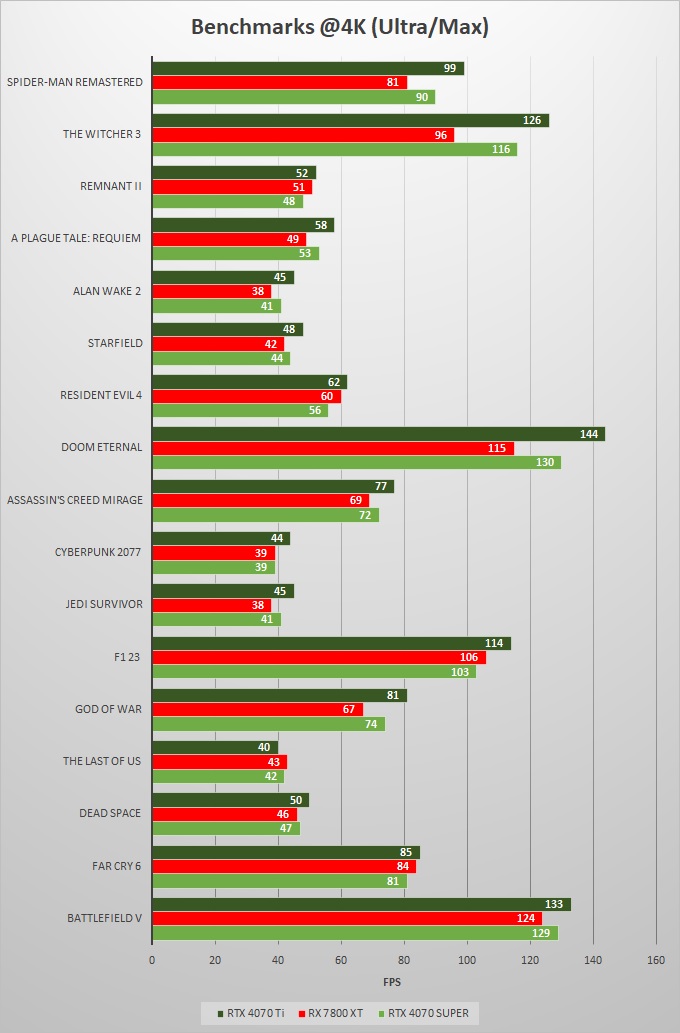
From the above gaming benchmarks, we can see that RTX 4070 SUPER is the second fastest card in this comparison. It beats the RX 7800 XT in almost all games and is around 7% faster on average. On the other hand, RTX 4070 SUPER lost to RTX 4070 Ti by almost the same margin as it is around 8% slower than RTX 4070 Ti.
Power Consumption
RTX 4070 is the most power-efficient card here with maximum power consumption of 220W. The second most power-efficient card is the RX 7800 XT having a TDP of 263W. RTX 4070 Ti occupies the third place with a maximum power consumption of 285W. Both RTX 4070 SUPER and RTX 4070 Ti use the new 16-pin 12VHPWR connector for power while RX 7800 XT uses the traditional 8-pin PCIe connectors for power.
| RTX 4070 SUPER | RX 7800 XT | RTX 4070 Ti | |
| Power Connector | 16-pin 12VHPWR | 8-pin PCIe (x 2) | 16-pin 12VHPWR |
| Power Consumption | 220W | 263W | 285W |
| Recommended PSU | 650W | 700W | 700W |
Pricing & Availability
When it comes to the official base MSRP for basic or Founders edition cards, RX 7800 XT is the cheapest of the lot with a price tag of $499 (USD). RTX 4070 SUPER is priced at $599 while RTX 4070 Ti is the most expensive card here with a base price of $799. All prices are in USD. You can check the latest pricing of the custom AIB models of these cards from the links below.
Check RTX 4070 SUPER Price on Amazon
Check RX 7800 XT Price on Amazon
Check RTX 4070 Ti Price on Amazon
RTX 4070 SUPER vs RX 7800 XT vs RTX 4070 Ti Specifications
| RTX 4070 SUPER | RX 7800 XT | RTX 4070 Ti | |
| GPU Chip | AD104 | Navi 32 XT | AD104 |
| GPU Architecture | Ada Lovelace | RDNA 3.0 | Ada Lovelace |
| Fabrication Process | 5nm | 5nm GPU (MCD 6nm) | 5nm |
| CUDA Cores/Stream Processors | 7168 CUDA Cores | 3840 Stream Processors | 7680 CUDA Cores |
| RT Cores | 56 (3rd Gen.) | 60 | 60 (3rd Gen.) |
| Tensor Cores | 224 (4th Gen.) | 120 | 240 (4th Gen.) |
| Memory Size | 12 GB GDDR6X | 16 GB GDDR6 | 12 GB GDDR6X |
| Memory Interface | 192-bit | 256-bit | 192-bit |
| Memory Speed | 21 Gbps | 19.5 Gbps | 21 Gbps |
| Memory Bandwidth | 504 GB/s | 624 GB/s | 504 GB/s |
| Bus Interface | PCI Express 4.0 | PCI Express 4.0 | PCI Express 4.0 |
| DirectX | 12 Ultimate | 12 Ultimate | 12 Ultimate |
| OpenGL | 4.6 | 4.6 | 4.6 |
| Vulkan | 1.2 | 1.2 | 1.2 |
| SLI / CrossFire | NA | NA | NA |
| VR Ready | Yes | Yes | Yes |
| G-Sync/FreeSync | Yes | Yes | Yes |
| Power Consumption | 220W | 263W | 285W |
| Recommended PSU | 650W | 700W | 700W |
See also:
Final Words
RTX 4070 SUPER is a great addition to the GeForce RTX 40 series lineup because it is priced well, offers great performance, and has lower power consumption compared to its competitors. We can say that the RTX 4070 SUPER is almost an RTX 4070 Ti with slightly lower performance, lower power consumption, and a significantly lower price tag. On the other hand, RX 7800 XT is cheaper and has 4GB extra VRAM compared to RTX 4070 SUPER but loses on performance and power efficiency. If you still have any queries regarding these graphics cards then do ask me in the comment section below.
(*This post may contain affiliate links, which means I may receive a small commission if you choose to purchase through the links I provide (at no extra cost to you). Thank you for supporting the work I put into this site!)
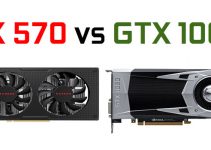
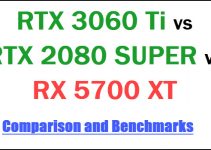
![Best RTX 3060 Ti Cards for 1440p Gaming [Custom AIB Models] Best RTX 3060 Ti Cards for 1440p Gaming [Custom AIB Models]](https://graphicscardhub.com/wp-content/uploads/2020/12/best-rtx-3060-ti-211x150.jpg)